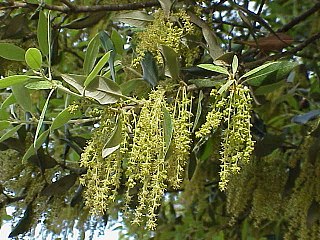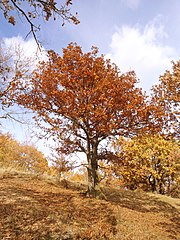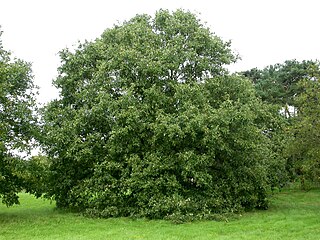
An oak is a tree or shrub in the genus Quercus of the beech family, Fagaceae. There are approximately 500 extant species of oaks. The common name "oak" also appears in the names of species in related genera, notably Lithocarpus, as well as in those of unrelated species such as Grevillea robusta and the Casuarinaceae (she-oaks). The genus Quercus is native to the Northern Hemisphere and includes deciduous and evergreen species extending from cool temperate to tropical latitudes in the Americas, Asia, Europe, and North Africa. North America has the largest number of oak species, with approximately 160 species in Mexico, of which 109 are endemic and about 90 in the United States. The second greatest area of oak diversity is China, with approximately 100 species.

Quercus glauca, commonly called ring-cupped oak or Japanese blue oak, is a tree in the beech family (Fagaceae). It is native to eastern and southern Asia, where it is found in Afghanistan, Bhutan, China, northern and eastern India, southern Japan, Kashmir, Korea, Myanmar, Nepal, and Vietnam. It is placed in subgenus Cerris, section Cyclobalanopsis.
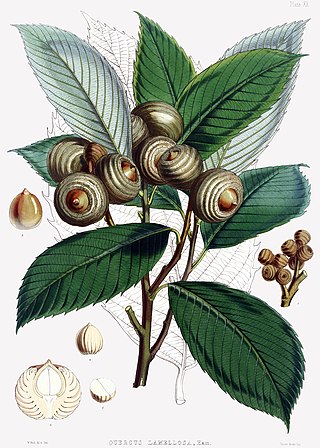
Quercus lamellosa is a species of oak (Quercus) native to the Himalaya and adjoining mountains from Tibet and Nepal east as far as Guangxi and northern Thailand, growing at altitudes of 1300–2500 m. The Lepcha of Sikkim call it book koong. It is placed in subgenus Cerris, section Cyclobalanopsis.

Quercus myrsinifolia is an Asian species of tree in the beech family Fagaceae. It has several common names, including bamboo-leaf oak, Chinese evergreen oak, and Chinese ring-cupped oak. Its Chinese name is 小叶青冈; pinyin: xiǎo yè qīng gāng, which means little leaf ring-cupped oak, in Japan it is called white oak and in Korea it is known as gasinamu (가시나무). It is native to east central and southeast China, Japan, Korea, Laos, northern Thailand, and Vietnam. It is placed in subgenus Cerris, section Cyclobalanopsis.
Quercus asymmetrica is an oak tree species in the beech family Fagaceae. It is found in China and northern Vietnam. It is placed in subgenus Cerris, section Cyclobalanopsis.
Quercus edithiae is a species of tree in the family Fagaceae and the "ring-cupped oak" sub-genus. It has been found in Vietnam and also in southern China, in the Provinces of Guangdong, Guangxi, and Hainan. In Vietnam it is called sồi editha. It is placed in subgenus Cerris, section Cyclobalanopsis.
Quercus longinux is an uncommon Asian species of trees in the beech family Fagaceae. It has only been found in Taiwan. It is placed in subgenus Cerris, section Cyclobalanopsis.
Quercus poilanei is an Asian species of tree in the family Fagaceae. It has been found in northern Indochina and also in the Province of Guangxi in southern China. It is placed in subgenus Cerris, section Cyclobalanopsis.

Quercus rex is an Asian species of tree in the family Fagaceae. It has been found in the seasonal tropical forests of northern Indochina, northeastern India, and also in the province of Yunnan in southwestern China. It is placed in subgenus Cerris, section Cyclobalanopsis.
Quercus saravanensis is an Asian species of tree in the beech family Fagaceae. It has been found in northern Indochina, and also in the Province of Yunnan in southwestern China. It is placed in subgenus Cerris, section Cyclobalanopsis.
Quercus thorelii is an Asian species of tree in the beech family Fagaceae. The species is named after the French botanist Clovis Thorel. It has been found in Indochina and in southern China. It is placed in subgenus Cerris, section Cyclobalanopsis, the ring-cupped oaks.
Quercus xanthotricha is an Asian species of tree in the beech family Fagaceae. It has been found in northern Indochina and in southern China (Yunnan). It is placed in subgenus Cerris, section Cyclobalanopsis.
Quercus gomeziana is a tree species in the beech family Fagaceae. There are no known subspecies. It is placed in subgenus Cerris, section Cyclobalanopsis.

Quercus × turneri, known as Turner's oak, is a hybrid species of white oak native to Spain. It is a naturally occurring hybrid of holm oak and pedunculate oak, found where their ranges overlap, but was first described from cultivation. A semi-evergreen tree of small to medium size with a rounded crown, it was originally raised at the Holloway Down Nursery of Spencer Turner, Leyton, Essex, UK, noted by the zoologist Jean-Baptiste Lamarck at Trianon, Versailles in 1783, as the chêne de turnère. An early specimen was planted at the Royal Botanic Gardens, Kew in 1798; it was uprooted in the Great Storm of 1987 but resettled in the ground and then increased its healthy growth. Its 'Pseudoturneri' cultivar has gained the Royal Horticultural Society's Award of Garden Merit.
Quercus yonganensis is a species of oak native to southeast China. It is placed in subgenus Cerris, section Cyclobalanopsis, the ring-cupped oaks.
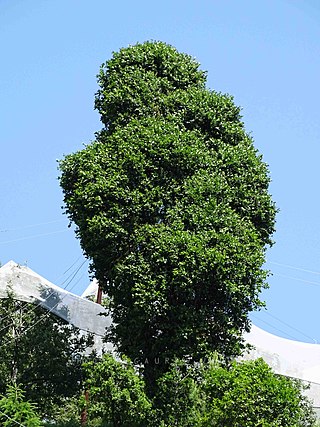
Quercus floribunda, called the Moru oak or Mohru oak, Tilonj oak and green oak, is a species of oak native to Afghanistan, Pakistan, India's western Himalaya, and Nepal, typically found from 2,000 to 3,000 metres above sea level. It is in the subgenus Cerris, section Ilex. An evergreen tree with a dense crown reaching 30 m (98 ft), it is an important fuelwood and fodder species.
Quercus look, also known as the look oak and the Mount Hermon oak is a species of oak in subgenus Cerris, section Cerris, native to the Levant region of Western Asia, including northern Israel, Lebanon, and Syria. Of the local oak species, it prefers to grow at the highest altitudes, for instance at c. 1800 m on Mount Hermon.
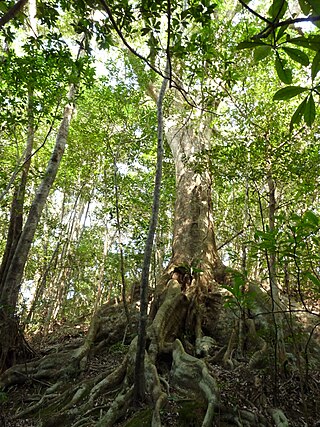
Quercus miyagii is a species of oak native to the Ryukyu Islands. It is placed in subgenus Cerris, section Cyclobalanopsis.
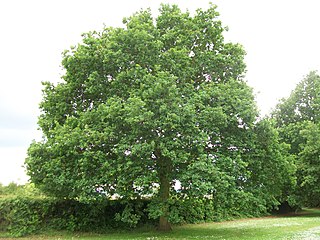
Quercus subgenus Quercus is one of the two subgenera into which the genus Quercus was divided in a 2017 classification. It contains about 190 species divided among five sections. It may be called the New World clade or the high-latitude clade; most species are native to the Americas, the others being found in Eurasia and northernmost North Africa.









